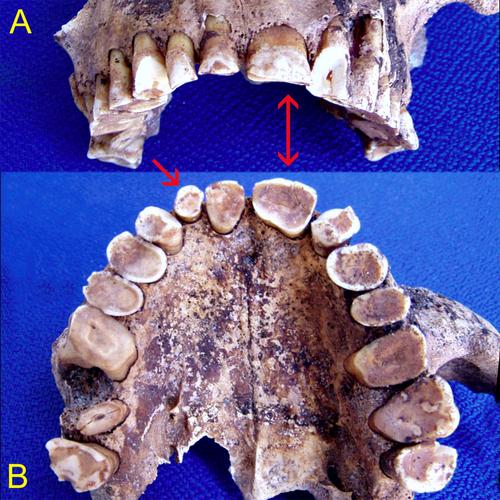Whether gemination or fusion, double teeth are rare worldwide, including Africa based on few published data. New cases from the continent are tallied, and anomalies potentially associated with double teeth are identified. These findings should interest a range of dental researchers.
The presence of double teeth was recorded in 97 modern and premodern North and sub-Saharan African samples (5631 inds.). They and coexistent anomalies are described relative to published examples. Prevalence was estimated as possible, using a Poisson model for 95% confidence intervals (CI).
Three maxillary double teeth were identified: a primary left lateral incisor in a Nubian child (1938–1756 BC), permanent left central incisor in an adult Egyptian (3650–3500 BC), and permanent right central incisor in a modern (19th century) adult from Guinea. Each co-occurs, respectively, with a talon cusp, peg lateral incisor and, in the latter individual, second premolar crown variation with rotation, and third molar dens evaginatus. Double tooth prevalence is 0.048% (CI 0.001%–0.270%), with regional variation, in premodern, and 0.000% in modern North Africans. It is 0.000% for premodern and 0.048% for modern sub-Saharan Africans (0.008%–1.714%).
The double incisors are comparable to other global examples, indicative of common developmental processes during odontogenesis. Prevalence is lower than published modern rates, to suggest some exceptionality in Africans as reported earlier for other dental variants. Finally, though circumstantial, double teeth and accompanying anomalies may share an etiology. Continuing research overall, and in Africa specifically, will promote an improved understanding of double teeth formation and expression.


